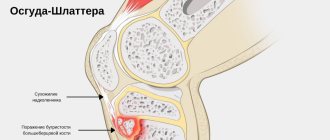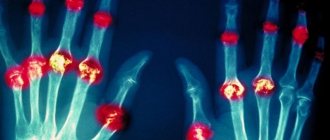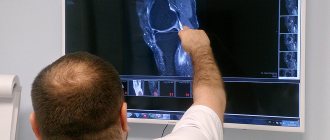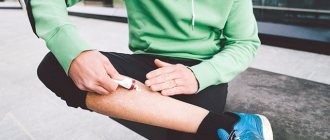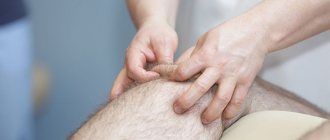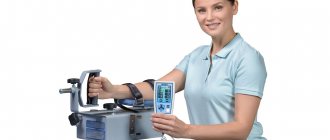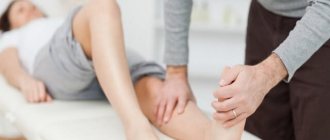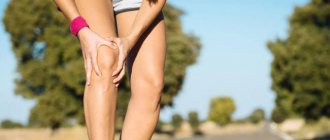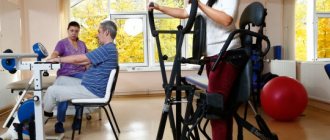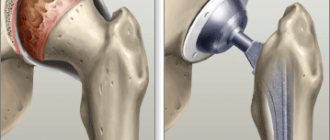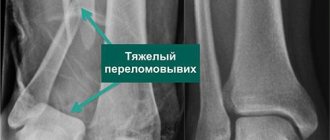Articles Knee bandages are one of the most frequently purchased orthopedic devices among all orthopedic devices. During movement, this area is subject to particularly severe stress. The use of a knee brace is recommended while recovering from injury or surgery. This product has another important task - it is capable of preventing injuries during sports training and intense physical activity.
Purpose
An orthopedic knee brace helps to fix the damaged part of the body in the least dangerous position. It can be worn by a traumatologist or orthopedist to improve the condition after injury, provide treatment or preventive measures.
Athletes and other people who constantly experience severe physical activity receive the greatest benefit from the use of fixation devices. With this lifestyle, the risk of injury due to awkward movement, sprains or swelling increases. Elastic bandages help stabilize the area in need and speed up recovery. They also provide gentle warming and relief.
Often the doctor prescribes wearing a bandage in the following situations:
- Sprained knee ligaments.
- Joint diseases – arthritis, arthrosis, osteoarthrosis.
- Swelling, inflammation of the knees.
- Severe pain after injury or surgery.
Unlike more common elastic bandages, knee braces can provide enhanced fixation of the desired area of the limb. The greatest rigidity that can be obtained when putting on a product depends on the features of its design. Due to the correct increased tension, the clamps can remove some of the load from the damaged area, reduce pain and inflammation, and improve blood circulation. Thanks to the use of devices, it is possible to speed up recovery and ensure the knee is in the correct position when moving.
Why is a meniscus needed?
There are two menisci in each knee joint: medial and lateral. They fit the rubbing surfaces of the cartilage and increase the contact area of the bones. The menisci stabilize and protect the joint, ensuring smooth and uniform movements in it.
Meniscus tears
There are almost no blood vessels in the menisci, so they regenerate very poorly. Every injury, even a small one, reduces the health of the joint. Eventually, a meniscus tear may occur, usually the internal one.
There are traumatic and degenerative ruptures. The first occurs after serious trauma, even in young people. In this case, the meniscus itself may initially be healthy. A degenerative rupture often happens “out of the blue” - already fairly worn-out meniscal cartilage cannot even withstand walking.
The size and location of the rupture, the condition of the ligaments and cartilage of the knee are important. If a large fragment is torn off, it can become wedged between the bones and lock the joint. Typical complications of a meniscus tear are arthrosis and synovitis of the knee.
Kinds
When selecting the appropriate type of knee brace, they are guided by the type of pathology or injury suffered. Only a doctor can make a diagnosis. After this, the patient will be given recommendations on the choice of orthosis and optimal characteristics.
The types of orthoses are:
- Compression.
- Supplemented with stiffening ribs.
- Splints.
- Detachable devices.
- Magnetic.
Compression knee pads
Bandages with compression properties are elastic bandages with high density. Such medical devices are convenient for preventing joint problems and are worn directly on the problem area. Elastic knee pads have a supporting and micro-massage effect; their use helps to significantly reduce the load.
Compression braces are either solid or have silicone rings placed in the center of the kneecap. They may be recommended for use in arthritis. Rings provide protection from heavy loads and injuries due to impact, and reduce stress.
Fasteners
This group is designed to perform different tasks. Fixing devices limit movement and also protect the knees from various injuries. For equipment in these cases, belts are used that help adjust the tension force, plates and stiffeners made of metal. The clamps are as follows:
Semi-rigid - help to hold the joint in the required position, without limiting its mobility.
Rigid - help to firmly fix the leg, complicating mobility. Restrictions can be adjusted to the desired extent - it is determined depending on the stage of the disease or post-operative recovery. An orthopedic bandage with high rigidity is necessary for the bones to heal correctly after a fracture.
There is another type of clamp. They are narrow straps attached to the bottom of the knee. Such a bandage can provide support to the tendon without restricting the movement of the ligaments.
Splints
Devices belonging to this category are used instead of plaster bandages. Bandages used for knee fractures have a rigid design and are equipped with special adjusters and metal splints. Knee splints will help create a rigid fixation, do not create problems with maintaining hygiene and do not provoke allergies.
Detachable options
High-quality neoprene is used to make detachable bandages; the models are supplemented with metal tires. They are used to improve the patient’s condition with sprains, bruises and inflammation of the ligaments in the knee.
Magnetic applicators
Bandages supplemented with magnetic elements can warm up, reduce the severity of inflammation, and eliminate pain and discomfort. This effect is achieved by improving blood flow in the damaged area of the leg.
Knee pads for sports
For athletes, we can recommend a separate type of bandages, which are ideal for prevention. Their types are as follows:
- Tapes are produced in the form of tapes with an adhesive layer, wound on reels. They are glued to the skin to eliminate muscle pain. When properly secured, tapes can significantly reduce the load on ligaments and joints.
- Calipers are highly elastic bandages made of neoprene. Using them, you can fix the desired area of the leg and get a well-defined warming effect. It helps reduce pain associated with inflammation. Basically, such devices are worn in case of sprains, bruises, to reduce the risk of injury before training or going to active entertainment.
- Orthoses are devices that are equipped with additional elements, such as hinges, belts, elements with an adhesive layer for fixation and contour rings. They help ensure reliable fixation of the kneecap. Such devices may be recommended if a person has suffered a ligament rupture or a meniscus injury.
- Elastic fixing devices made of neoprene, equipped with special knee pads - they help protect against impacts. Due to rigid fixation, support for the articular elements and protection of the ligamentous apparatus is provided.
Arthroscopic procedure
Many people are hesitant to undergo surgery because they do not know that manipulation of the meniscus of the knee joint is not so scary. Partial or complete resection is done in the most gentle way: without pain, cuts and blood, using a safe and effective regional anesthetic. Patients are concerned about whether it is possible to run after removal of the meniscus of the knee joint (watch our video on the topic) and engage in physical exercise?
In the operating room.
Let's just say that people are allowed to lead their usual lifestyle, where running, jumping, cycling, and so on are not contraindicated, but only after a thorough restoration of the operated area. There are many real examples where even football players return to the game after such an intervention, and actively take part in competitions, playing at a professional sports level.
Exercise not on an unstable platform.
It is very important for the patient’s life to undergo rehabilitation so that after surgery the meniscus of the knee joint does not change for the worse. It will be as dynamic and rich as before. Well, we already discussed the dangers of inaction at the very beginning of the article. Now, actually, let's talk about the surgical procedure itself.
Modern medical technologies allow injured cartilaginous structures to be restored minimally invasively. Thanks to this, recovery after surgery, usually a suture is placed on the meniscus, is quick and without any difficulties. For therapeutic and restorative purposes, the arthroscopy method is used. The procedure is performed using a fiber-optic endoscopic device equipped with a video device called an arthroscope.
- The optical device looks like a thin probe. The probe is inserted through a puncture in the skin (diameter 5 mm) inside the joint and brought directly to the damaged object, which is visualized on the operating screen in enlarged sizes. The minimally invasive technique can also be used as a diagnostic tool if traditional diagnostic methods turn out to be insufficiently informative.
- Having decided on the treatment tactics, which will depend on the type and severity of the damage, the surgeon, using an additional puncture and special instruments, begins to perform the main tasks of eliminating defects on the meniscal body. The doctor, as far as possible, will try to preserve the cartilage tissue as much as possible, sparingly removing only clearly non-viable areas.
- There are two most common correction techniques: suturing the linear tear or excision of the marginal dislocated areas. In the first case, a suture will be applied using medical threads using a special technology. In the second, microsurgical instruments will be used to resect the flaps in the peripheral part, and then polish the edges of the meniscus. If free fragments are detected, the specialist removes them from the joint space.
- At the end of the session, the surgical field is washed. Small skin incisions are sutured, treated with antiseptic agents and covered with a sterile dressing. No plaster needed.
In case of generalized crushing of structures or an excessively large gap, the cartilaginous layer will most likely be completely removed. In practice, such a clinic is extremely rare. As for implantation or transplantation, today the methods of implanting artificial implants and donor cartilage grafts of the knee are at an experimental stage. Therefore, such high-tech methods in modern meniscus surgery have not yet become widespread.
Sizing
To achieve the desired result when using orthopedic knee braces, you need to choose the right size. To do this, take measurements. For this you will need a tailor's tape with centimeters marked on it. With its help, leg circumference is measured in the following areas:
- The distance from the knee is 15 cm up.
- Mid knee.
- The distance from the knee is 15 cm down.
When choosing orthoses, you need to look at what size chart the manufacturers indicate. For models that have a certain marking on the packaging, the actual size does not always coincide with generally accepted parameters.
Using your own measurements, you can choose the perfect fit for your knee joint. You can use them for comparison with the size chart printed on the product packaging or contained in the instructions.
Sports elastic knee pads
Elastic knee pads with a weak fixation are no longer intended to fix or protect the joint, but to warm it up during intense training.
Thicker knee pads protect the knee joint from dislocations and impacts.
There are special knee pads for each sport. Read more about knee pads for sports in the article Sports knee pads.
How to dress and how to wear?
It is very important to provide the bandages with the required degree of tension. When loosened, the bandages are unable to provide the joints with the support they need. Improper tension can result in injury or increased stress on the knees. With intense fastening, the vessels are pinched, limiting the amount of oxygen and nutrients reaching the tissues.
It is better to fasten the bandages for the first time under the supervision of a competent specialist - this will allow you to better understand how to use the tension regulators. They will tell you the optimal level at which to install Velcro or straps. This will help ensure wearing comfort and protection for the joint area.
Those who have been prescribed a bandage should remember that they cannot be worn all the time. The exception is rigid orthoses that patients wear after operations and fractures. If you are planning to use bandages for preventive purposes or to help with recovery, consult a doctor. The optimal wearing time will be selected for you, based on the diagnosis, severity of the disease, and state of health.
When using fixation devices, you must carefully follow all doctor's instructions. Otherwise, you will harm the ligaments and muscles, which will be weakened due to low intensity of work. To prevent this, do not wear the bandages for more than the recommended time. If you experience severe pain when using the fixation devices, you should not continue wearing it. If you experience discomfort, inconvenience, or pain, consult your doctor.
Care
Orthoses, like other medical devices, require proper care. In order for them to serve without problems for a long time, you must carefully follow these rules:
- Carry out regular washing of bandages in water not hotter than 35 degrees. Washing is done by hand.
- Non-aggressive soaps should be used for washing.
- The bandages should be dried by carefully straightening them on a horizontal surface.
- When drying, do not place products with plastic parts near heating devices. Heat can warp plastic.
You can wear bandages only if your doctor insists on it. The selection of the optimal retainer must be carried out with the help of a specialist. Bandages differ according to the following characteristics:
- Types and designs – semi-rigid, hard, soft.
- Reinforcing parts - their number and location.
- Additional equipment, which may include applicators, rings, hinges.
- Fastening method (Velcro, metal clips, belts, etc.).
- Materials used for making bandages.
- Features of use - optimal wearing time and situations in which it is allowed.
By carefully following the advice of a specialist and the rules that must be applied to care for a medical device, you can extend its service life. Such measures help reduce the risk of adverse consequences and get the desired result in a short time.
